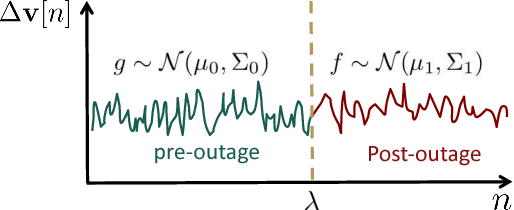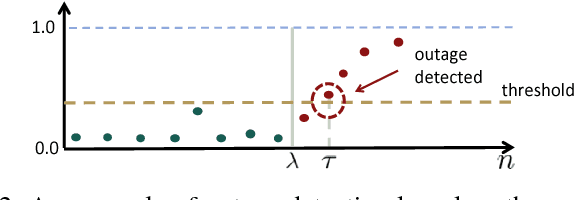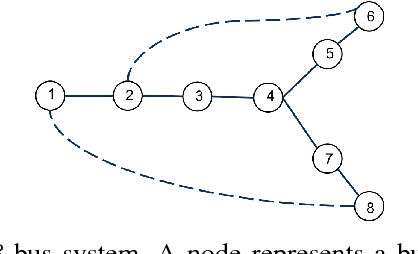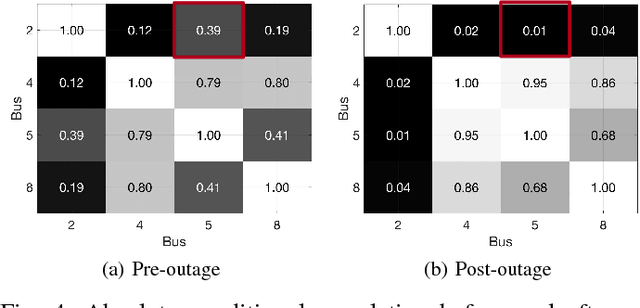Fast Distribution Grid Line Outage Identification with $μ$PMU
Paper and Code
Nov 14, 2018



The growing integration of distributed energy resources (DERs) in urban distribution grids raises various reliability issues due to DER's uncertain and complex behaviors. With a large-scale DER penetration, traditional outage detection methods, which rely on customers making phone calls and smart meters' "last gasp" signals, will have limited performance, because the renewable generators can supply powers after line outages and many urban grids are mesh so line outages do not affect power supply. To address these drawbacks, we propose a data-driven outage monitoring approach based on the stochastic time series analysis from micro phasor measurement unit ($\mu$PMU). Specifically, we prove via power flow analysis that the dependency of time-series voltage measurements exhibits significant statistical changes after line outages. This makes the theory on optimal change-point detection suitable to identify line outages via $\mu$PMUs with fast and accurate sampling. However, existing change point detection methods require post-outage voltage distribution unknown in distribution systems. Therefore, we design a maximum likelihood-based method to directly learn the distribution parameters from $\mu$PMU data. We prove that the estimated parameters-based detection still achieves the optimal performance, making it extremely useful for distribution grid outage identifications. Simulation results show highly accurate outage identification in eight distribution grids with 14 configurations with and without DERs using $\mu$PMU data.
 Add to Chrome
Add to Chrome Add to Firefox
Add to Firefox Add to Edge
Add to Edge